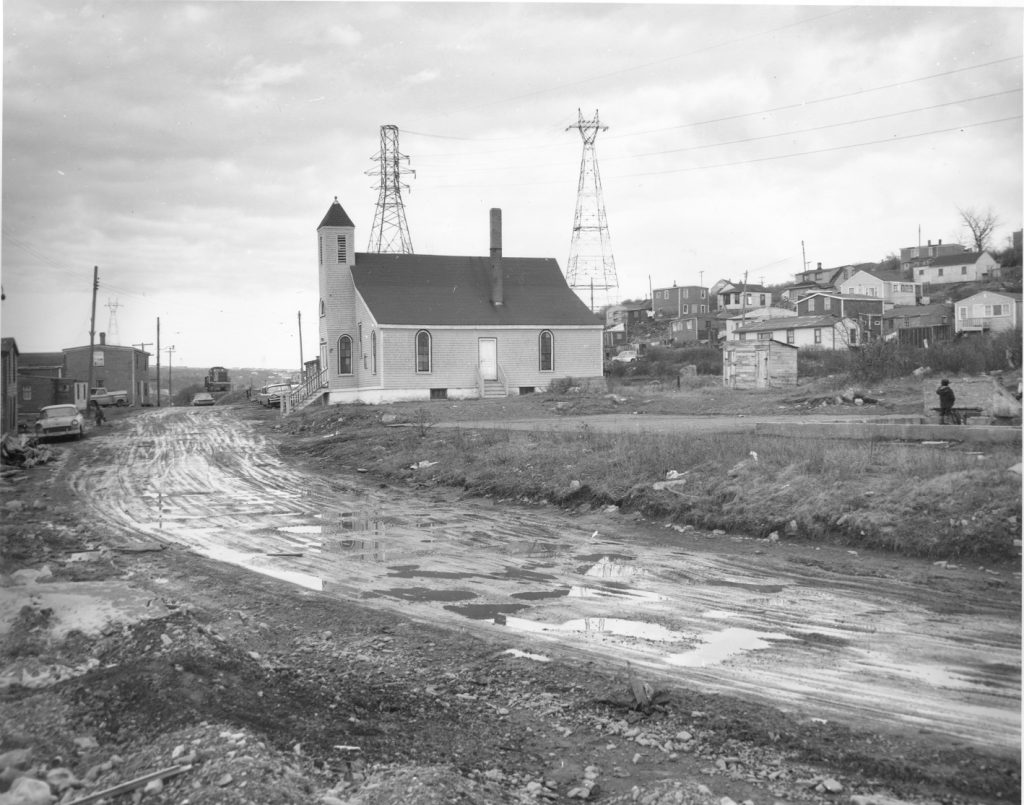
Three years ago on the 100th anniversary of the Halifax Explosion I wrote about the 2,000 people that died when a munitions ship blew up. That explosion left 25,000 people homeless, with 20 percent of the population killed or seriously maimed. The Vancouver Sun published an interactive map that detailed the events leading up to and after the explosion.
But there was another story too, and that was the rebuilding of the city. The explosion meant that Halifax could rebuild the city with better constructed houses, paved roads, and proper water pipes and discharge sewers, an effort that took many years. The City of Boston and organizations like the Rockefeller Foundation teamed together to bring health and sanitary services to the community. This has been documented in a book edited by David Sutherland called We Harbour No Evil Design: Rehabilitation Efforts after the Halifax Explosion of 1917.
Before the blast, Halifax still had dirt roads, unreliable electricity, open sewers and a declining tax base. Despite the funding that came to rebuild the city in a sanitary way, it was not distributed evenly across Halifax. While the funding brought pasteurized milk, water treatment and a health centre, certain neighborhoods received sanitary sewers while one neighbourhood received none. Author Michelle Herbert Boyd observed that wealthier areas such as Richmond were provided for while the African Canadian neighbourhood at Halifax’s North End, Africville, received scant assistance.
Africville was established in the 1840’s and included freed slaves and refugees from the War of 1812. When new sanitation sewer was provided for all of Halifax, it was not extended to Africville. While the Richmond neighbourhood was “being reconstructed and improved after the Explosion, the main sewer line was brought directly through Africville to empty into Bedford Basin; Africville residents were not themselves given sewer service, and to add insult to injury, they had to endure raw sewage from their Richmond neighbours running through their backyards whenever a line broke.”
That inequity continued in the following decades. In the 1930’s Africville residents petitioned for running water, paved roads, sewage disposal garbage removal, police coverage and electricity. That was ignored by Halifax City Council. And in the 1950’s Council placed an open-pit garbage dump 350 meters away from the western side of Africville. That cemented the city’s perception of this neighbourhood as a slum. There’s no “reference in the council minutes to any concern for the health of Africville residents, or any consultation”.

In the 1960’s when Africville was cleared for a “renewal” scheme popular at the time, few residents had land titles and the land was expropriated by the City a lot at a time over a period of five years. Promised rehousing never materialized, and residents’ belongings were moved in dump trucks instead of moving vans.
Today the segregated school which was closed in 1953 has been rebuilt as a museum and the area renamed Africville Park. The school site was made a National Historic Site in 1996 and on February 24 2010 Halifax Regional Municipality Mayor Peter Kelly offered an official apology for the community’s destruction.
You can read more about Africville’s remarkable history and legacy here and view this short YouTube video from Historica Canada.













I lived in Halifax. Grew to despise it.
For a city its size, it’s rambunctious. With military bases all over the place and tons of universities, it can be wild at all hours.
When I lived there, it was decidedly racist. I don’t know their policy now, but Casino Taxi, one of the city’s largest, hired no Blacks.
Ironically, it had many Black customers.
Some these would have been displaced by the Africville land grab and housed in Mulgrave Park (think Cabrini Green, but gentler). Its addresses were A Block and B Block … through the alphabet. They were also housed in Uniacke Square. It has been substantially renovated after being trashed.